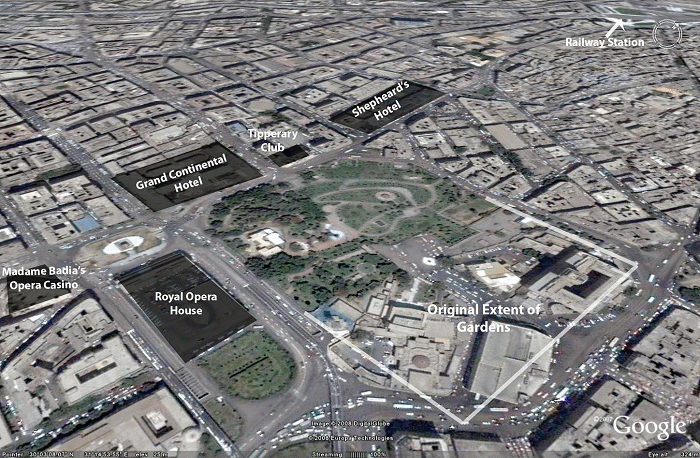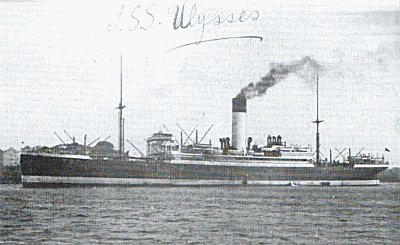 |
|
Egypt 
A contemporary aerial view of the Ezbekiya (Ezbekiyya) Gardens precinct of Cairo. The area to the west of the Gardens was once known as Paris on the Nile. Much has changed since 1916, but the statue of Ibrahim Pasha still stands in the square in front of the site of the old Royal Opera House. Built in 1869, the Royal Opera House was made of wood, and burnt down mysteriously in 1971 soon after rumours were circulated about its imminent demolition. A multi-level carpark now stands on the site. Grand Continental Hotel was originally called the ‘New Hotel’ and after World War 1 it was renamed the ‘Continental-Savoy’. It survives, but has had all of its grand Victorian-era stonework removed. The Shepheard’s Hotel, was the most elite and genteel of all Cairo’s hotels. However, Australian soldiers celebrating the Armistice in 1918 reportedly engaged in a pillow fight that left the grand staircase looking like a blizzard had passed through it. Throughout its history guests included H.M. Stanley who famously coined the phrase “Dr Livingston I presume”, Lord Carnarvon (who in 1923 died of an infected mosquito bite after opening the tomb of the Pharaoh Tutankhamen), and Lawrence of Arabia. The hotel endured as a symbol of British influence, and was burned down by rioters during the Egyptian revolution in 1952. The Ezbekiya (Ezbekiyya) Gardens was once a grand botanical garden that was fenced and required patrons (military excepted) to pay an entry fee. Once boasting a lake, manicured lawns and pavilions, its original size has been halved by building development on its eastern boundary. 
Kamel Street, Cairo and Shepheard’s Hotel 
Postcard view of Cairo, 1916 
Prior to Gallipoli, the 14th Battalion travelled to Egypt on the ‘Ulysses’ Photo courtesy of Carl Johnson (compiler, Jacka’s Mob, 1999) |
Home | Michael Lawriwsky | News/Events | Hard Jacka-The Book | Places | Links
Copyright © 2008 Michael Lawriwsky